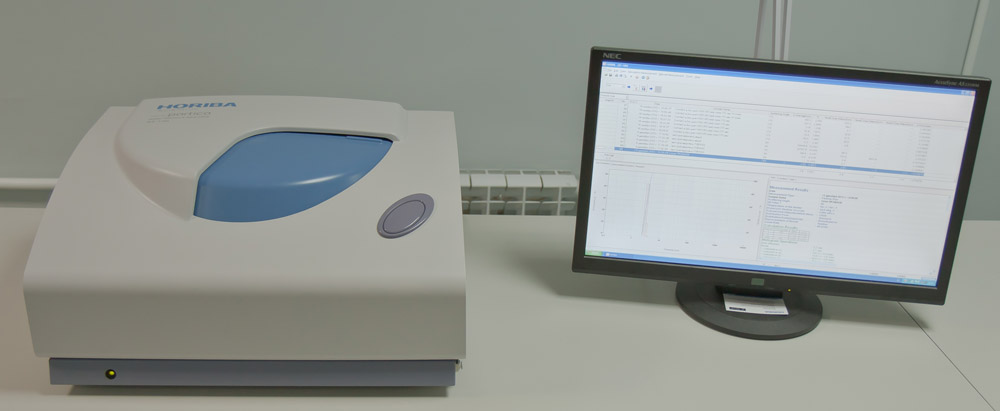
The SZ-100 uses the technique of dynamic light scattering to determine particle size. Dynamic light scattering is the measurement of fluctuations in scattered light intensity with time. These fluctuations in intensity arise due to the random Brownian motion of the nanoparticles. Therefore, the statistical behavior of these fluctuations in scattered intensity can be related to the diffusion of the particles. Since larger particles diffuse more slowly than small particles one can readily relate particle size to measured fluctuations in light scattering intensity.
Three analyzers in a single compact body deliver high-sensitivity, high-accuracy analysis of each measurements parameter:
1. Particle size measurement range 0.3 nm to 8 µm.
The SZ-100 Series measures particle size and particle distribution width by dynamic light scattering (DLS). Analysis across a wide range of sample concentrations: Measurement of samples ranging from low ppm-order concentrations to high-concentration samples in double-digit percent-ages is possible.
2. Zeta potential measurements -200 to +200 mV
Analysis of sample volumes as small as 100 µL using HORIBA-developed microelectronics cells. Use the value of zeta potential to predict and control dispersion stability. High zeta potential magnitudes indicate a stable dispersion, useful for formulation work.

3. Molecular weight 1x103 to 2x107 Da
Absolute molecular weight (Mw) and the second virial coefficient (A2) are obtained by performing static light scattering measurements as a function of sample concentration and preparing Debye plots.



